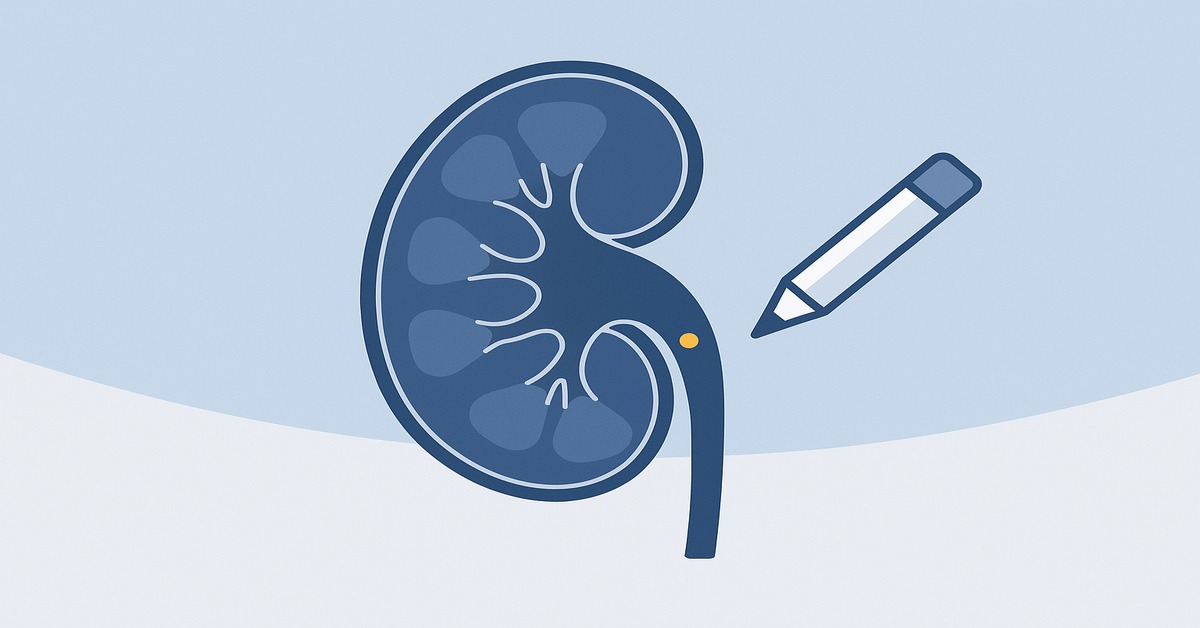Kidney stones are hard mineral deposits that can vary in size and cause significant discomfort. One common query among patients is: “How serious is a 5mm kidney stone?”
In this blog, we’ll explore treatment options, symptoms, and risks of blockage. We will also discuss the role of medications for a 5mm stone. This size is often compared to a pencil tip in a Kidney stone size chart.
Is a 5mm Kidney Stone Serious?
A 5mm kidney stone is moderate in size. It is not the largest stone. However, it is moderately dangerous for blocking. This is especially true in the ureter (the tube that carries your kidney to your bladder).
In some people, it might pass on its own. In others, it can be very painful. It may also cause urinary problems.
Symptoms of a 5mm Kidney Stone
Typical symptoms are:
- Sharp, cramping pain in the back or side (flank pain)
- Pain spreading to the groin or lower abdomen
- Blood in urine (hematuria)
- Nausea or vomiting
- Frequent urination
- Burning while urinating
5mm Kidney Stone Treatment
1. Medications (Initial Treatment)
In most patients, physicians begin conservatively. Some medications can facilitate stone passage:
1. Alpha-blockers (e.g. tamsulosin): Relax the muscles of the ureter to enable the stone to pass
2. Painkillers: NSAIDs or opioids to control pain
3. Hydration: Drink 2–3 liters of water per day. This helps flush the stone.
✅ Medications are particularly recommended when there is moderate risk of blockage but no evidence of acute complications.
2. Shock Wave Lithotripsy (SWL)
When the stone does not pass on its own, Shock Wave Lithotripsy is a non-surgical procedure that utilizes sound waves to shatter the stone into tiny pieces that can be easily passed.
3. Ureteroscopy (URS)
If SWL does not work or if the stone is causing recurrent pain/blockage, Ureteroscopy can be done. A narrow scope is inserted through the urethra to remove or shatter the stone.
4. Surgical Options
Although uncommon in 5mm stones, surgery (PCNL) is an option if the stone is:
- Causing serious blockage or infection
- Having several other stones along with it
Kidney Stone Size Chart & Passing Probability
| Stone Size | Passing Probability | Recommended Approach |
|---|---|---|
| ≤ 4 mm | 80% – 90% | Hydration, meds |
| 5 mm | 50% – 70% | Meds, possibly SWL |
| 6–7 mm | 20% – 40% | SWL, URS |
| ≥ 8 mm | < 20% | URS, Surgery |
📌 Note: A 5mm stone is roughly the size of a pencil tip, small but not insignificant.
Prevention Tips
- Drink well
- Restrict salt and animal protein consumption
- Have routine kidney checkups if you are susceptible to stones
- Eat according to diet suggested by your doctor
When to See a Doctor
Seek immediate attention if you have:
- High fever or chills
- Severe, relentless pain
- Can’t urinate
- Nausea/vomiting with pain
Conclusion
Although a 5mm kidney stone can be expelled with medication and hydration, it’s critical to watch symptoms. Early intervention decreases pain, prevents complications, and accelerates the recovery process. Always seek consultation from a urologist for an individualized strategy.
Disclaimer
This blog is not intended for any medical purpose. It is only for informational purposes and doesn’t replace professional medical treatment, diagnosis, or advice. Always consult a trained healthcare provider in relation to your individual medical condition.

